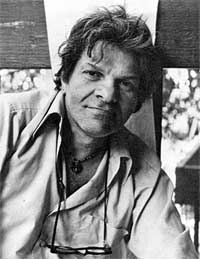
Jazz Poems
FOR MILES
Your sound is faultless
pure & round
holy
almost profound
Your sound is your sound
true & from within
a confession
soulful & lovely
Poet whose sound is played
lost or recorded
but heard
can you recall that 54 night at the Open Door
when you & bird
wailed five in the morning some wondrous
yet unimaginable score?
GREG CORSO
from Jazz Poems ~ Selected and Edited by Kevin Young
More Posts: book,classic,collectible,history,jazz,library,poet
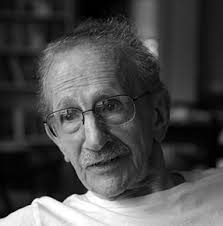
Jazz Poems
SOLOING
My mother tells me she dreamed
of John Coltrane, a young Trane
playing his music with such joy
and contained energy and rage
she could not hold back her tears.
And sitting awake now, her hands
crossed in her lap, the tears start
in her blind eyes. The TV set
behind her is gray, expressionless.
It is late, the neighbors quiet,
even the city–Los Angeles–quiet.
I have driven for hours down 99,
>over the Grapevine into heaven
to be here. I place my left hand
on her shoulder, and she smiles.
What a world, a mother and son
finding solace in California
just where we told it would
be, among the palm trees and all-
night super markets pushing orange
back-lighted oranges at 2 A.M.
“He was alone,” she says, and does
not say, just as I am, “soloing.”
What a world, a great man half
her age comes to my mother
in sleep to give her the gift
of song, which–shaking the tears
away–she passes on to me, for now
I can hear the music of the world
in the silence and that word:
soloing. What a world–when I
arrived the great bowl of mountains
was hidden in a cloud of exhaust,
the sea spread out like a carpet
of oil, the roses I had bought
from Fresno browned on the seat
beside me, and I could have
turned back and lost the music.
PHILIP LEVINEfrom Jazz Poems ~ Selected and Edited by Kevin Young
More Posts: book,classic,collectible,history,jazz,library,poet
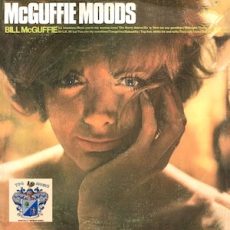
Daily Dose Of Jazz…
Bill McGuffie was born on December 11, 1927 in Carmyle near Glasgow, Scotland. After three years studying the piano he had an accident as a child which caused the loss of his second finger of his right hand, but despite the accident he started playing again and modified his technique. By the time he turned eleven he was awarded the Victoria Medal for his piano proficiency by the Victoria College, Glasgow.
Finding it difficult he decided to stop playing until friends and colleagues suggested playing dance music. Towards the end of World War II when he was 17, he moved to London and began a career in 1946 playing in the Teddy Foster Orchestra at the Lyceum.
Working with other top bands followed until 1952 when he got his big break when the BBC formed their own show band run by Cyril Stapleton. McGuffie was a featured artist with a big public following, which led to a recording contract and he was voted in top place in the Melody Maker readers’ poll from 1953 to 1955. This led to him appearing in the early Esquire jazz poll winners records and recorded with trumpeter Kenny Baker’s Dozen.
He made a limited number of records which were jazz tinged and a big band record. Bigger success came with his light music and his albums with strings. Noted for his great musicianship and his impeccable good taste, his jazz records with the Kenny Baker Dozen and one track from the Melody Maker’s All-Stars are available. He also recorded albums with no jazz content, and worked extensively with bandleader Joe Loss, where he was featured.
He won an Ivor Novello Award in 1960 for his composition Sweet September, a Song Writers’ Guild Badge of Merit, and the British Academy of Songwriters, Composers and Authors Gold Badge of Merit.
Pianist Bill McGuffie, who went on to be a film composer and conductor, and with the onset of cancer, died on March 22, 1987 at the age of 59.
More Posts: composer,conductor,history,instrumental,jazz,music,piano
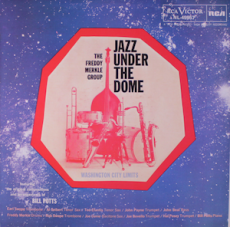
Daily Dose Of Jazz
George Robert Swope was born December 2, 1926 in Washington, D.C. By 1947 he was playing with Buddy Rich, recording with Jerry Wald, and followed with a two year stint with Chubby Jackson in 1948. He closed out the decade working with Gene Krupa in 1949-50, then with Elliot Lawrence in 1950-51.
He led his own trio in the D.C. area in the early Fifties, and also was a member of The Orchestra, the band which accompanied Charlie Parker in 1953 and Dizzy Gillespie in 1955. Spending time in New York City in the latter half of the decade, he played alongside Larry Sonn, Boyd Raeburn, Claude Thornhill, Jimmy Dorsey, and Louie Bellson.
In the 1960s he worked in Washington, D.C. often as a leader. On January 9, 1967 trombonist Rob Swope, the younger brother to trombonist Earl, died in his hometown.
More Posts: bandleader,history,instrumental,jazz,music,trombone
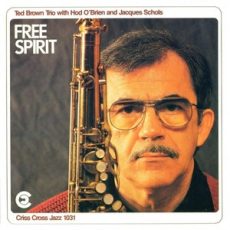
Daily Dose Of Jazz…
Theodore G. Brown was born into a musical family on December 1, 1927 in Rochester, New York. He learned banjo and violin from his father who also taught him to read music at six, and clarinet and tenor sax from his uncle. After playing in army bands from 1945 to 1947 and then in Hollywood, California for the following year, he moved to New York City.
He worked with Lennie Tristano and fellow pupils and associates Lee Konitz and Warne Marsh for two years beginning in 1955. During that time Ted recorded a session for Vanguard, worked with Ronnie Ball, and played a date in Hollywood with Warne Marsh.
>Returning to New York City he worked extensively in clubs. Brown recorded with Konitz in 1959, and again in 1976, while leading his own group in the late Seventies. He also worked and recorded with Art Pepper and Hod O’Brien.
Cool jazz tenor saxophonist Ted Brown, who recorded as a leader or co-leader thirteen albums and as a sideman was a part of five albums with Tristano, Marsh and Konitz, is 97 years old.
More Posts: bandleader,history,instrumental,jazz,music,saxophone



